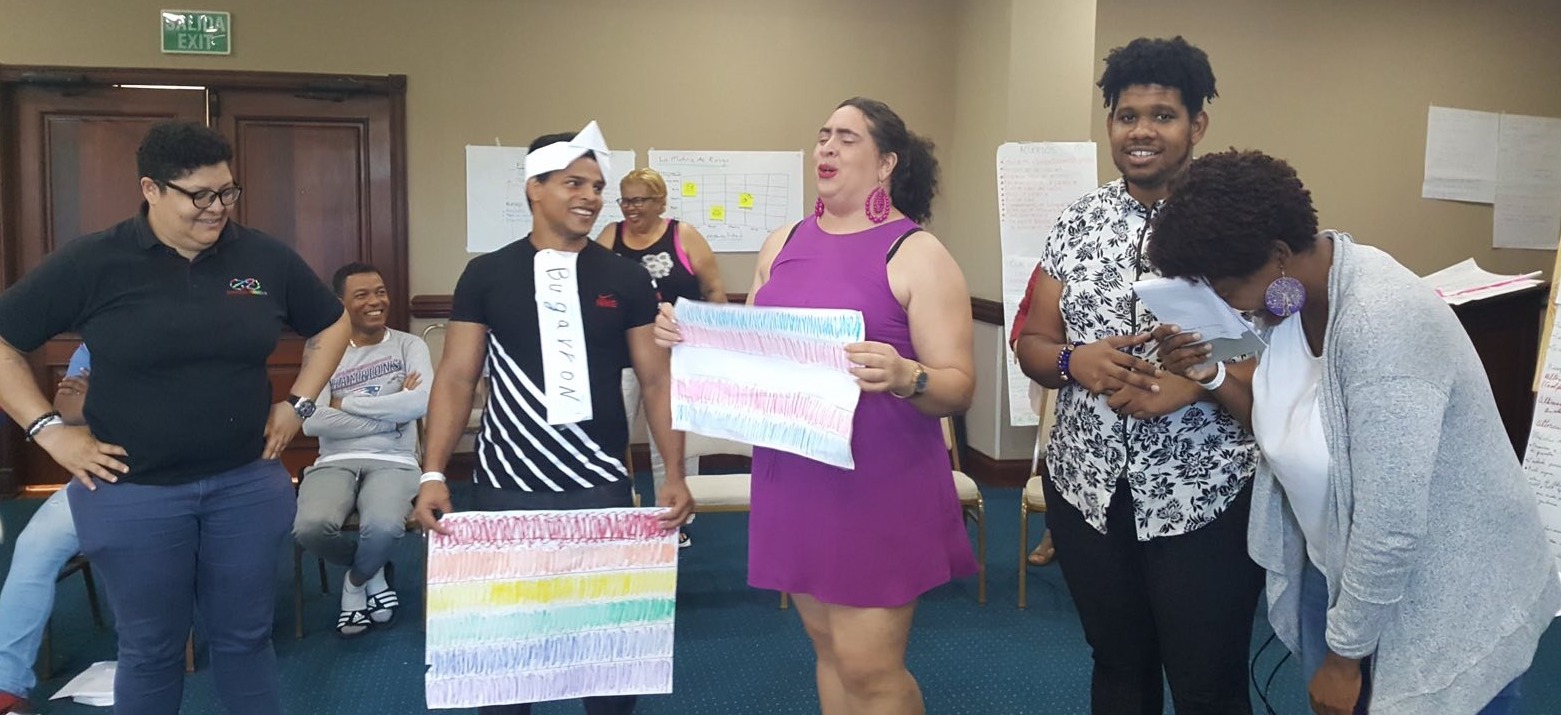|
OBJECTIVE |
To pull together and act out the elements of a protection plan in situations of different threats |
|
TIMING |
105 minutes |
|
TIME BREAKDOWN |
Introduction - 10 minutes Group work - 50 minutes Presentations - 20 minutes Discussion - 20 minutes Closing remarks - 5 minutes |
|
MATERIALS NEEDED |
Flip charts & marker pens |
| OPTIONAL MATERIALS | Projector Slides featuring the group work questions |
|
PREPARATION |
Create 3 scenarios which the participants face, eg assault and arrest at protests, abduction or attack whilst documenting violations in the rural areas, office raid by the authorities involving confiscation of devices and potential arrests |
When planning and facilitating this session, it is important to consistently apply an intersectional lens to each participant's identity and experiences, and their protection needs. Overlapping systems of discrimination and privilege, such as gender, sexual orientation, religion, disability, racial and/or ethnic origin, economic status/class, marital status, citizenship, age and physical appearance, can have a profound impact on human rights defenders' and their communities' perception of and experience with risks and protection.
Introduction: 5 mins
- The objective of this session is to pull together the previous learning about risk analysis and to create role plays reflecting protection plans in action
- Reminder to the group about the risk formula or matrix, and also to any protection plans previously developed in the group
- In real life, defenders are often confronted by more than one threat, and must be prepared for the most likely situations
- If everyone knows what to do in a situation, it will minimise the impact of the risks and threats
- You will be doing a role play, and we need to take care of ourselves and each other in case this could trigger bad memories or experiences, so it is IMPORTANT that:
- Each person should decide themselves which role they are comfortable playing – do not force anyone to play any role
- If anyone prefers to change groups or be an observer, that’s fine too

Exercise role play preparation: 50 minutes
Split into two groups of approximately 6 participants
Consider the situation allocated to your group and:
- using the risk formula (or matrix), identify the threats, vulnerabilities and capacities
- create a security plan to reduce vulnerabilities and maximise the use of capacities
- using role play, act out your protection plan in action in plenary (10 minutes)
Exercise – role plays 20 minutes (10 minutes each)
The groups present their role plays.
“This role play of a protest is a great way to train new members, to reduce their anxieties about what might happen”
In order to reduce absorbing the impact of playing the role, at the end of each role play, the facilitator should ask the role play participants to “return from your role to yourself”.
The facilitator asks each participant to sit down on a chair, then to stand up, take a deep breath in, walk around the chair and sit down again as themselves”.
Discussion - 20 minutes
The participants should discuss what they learned from conducting the role play. After this, participants from each group may consider the tactics they used and how they could have been improved. The other group may make suggestions too.
Closing remarks - 5 mins
- Role plays are good training for all our colleagues – this is the best technique to promote behaviour change
- Consider conducting regular role plays on different threat situations in your organisation/network/community
Reference materials:
